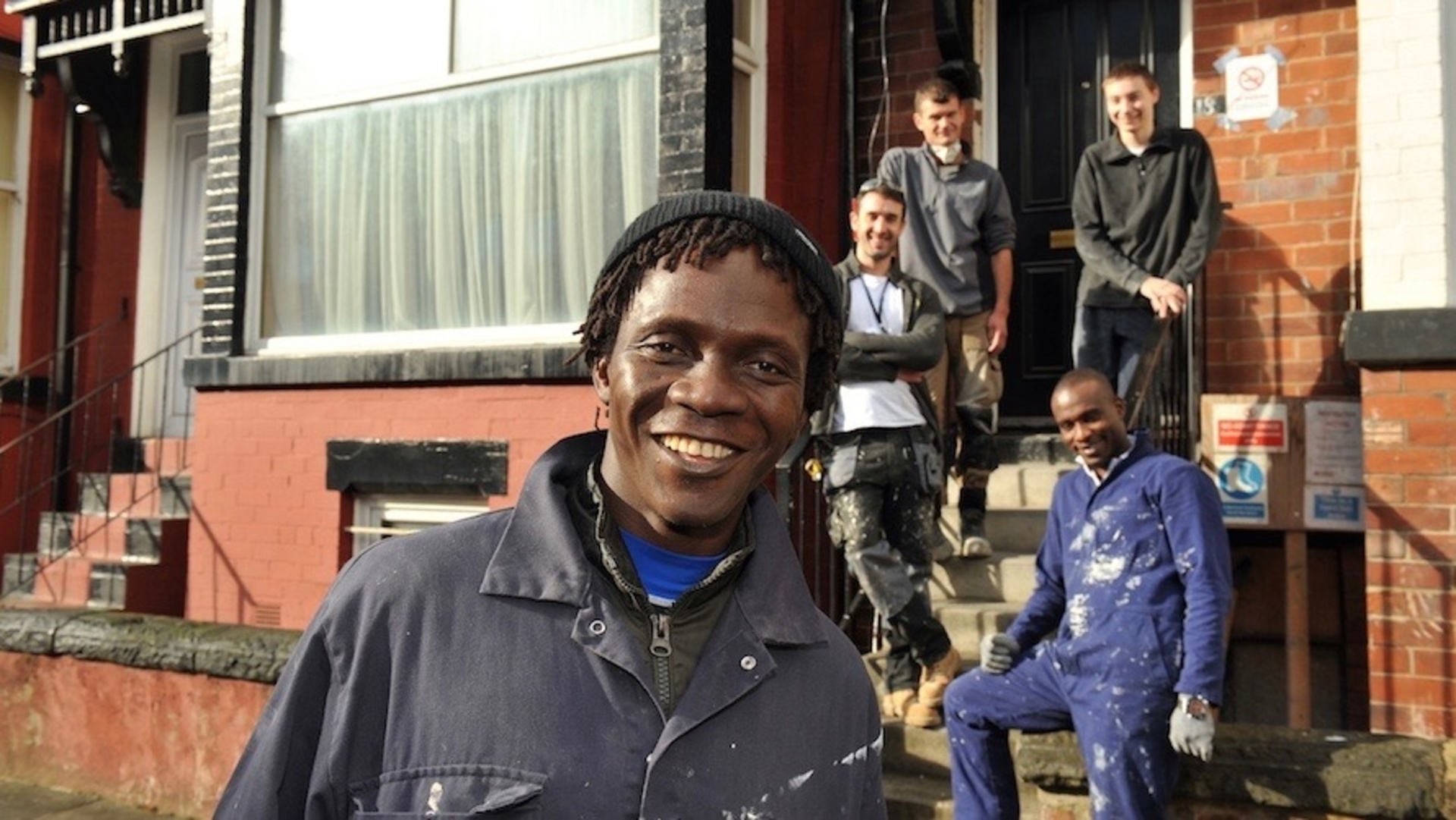“We’ve professionalised since then but the mission is the same: let’s do something to provide more homes for homeless people.”
Latch – now a community benefit society (volunteers pictured) – has 64 properties it rents out to homeless people and those at risk of homelessness.
Two other social enterprises in Leeds – Canopy and Gipsil – have also worked with people in housing need to bring empty terraced houses in the city back to life.
Latch has been at its busiest in the past three years, thanks to the UK government’s Empty Homes Programme (EHP), which set aside £60m for community-led groups.
Around £900,000 from the EHP fund helped Latch buy, do up and rent out 25 terraced homes (15 houses were brought back into use from the fund, which enabled Latch to secure loans for another 10 properties).
“It’s been a good period for us,” says Hartley. “But it’s still difficult to get our hands on empty properties at the right price, because owners have strange desires. They can hold onto the idea a property should be worth a lot, and that the housing market will turn for them in future.”
Advertising helps fund Big Issue’s mission to end poverty
Hartley says it has cost Latch £105,000, on average, to bring each home back into use – around £70,000 to buy a derelict property, £20,000 on refurbishing and £15,000 for overheads (the cost of managing the whole process and getting tenants in).
“We did buy one house for £40,000 but I think we spent as much as £35,000 refurbishing that one. It can be a lot of work.”
These guys have local knowledge, the enterprise to make things happen, and a track record of getting value for money
Jon Fitzmaurice, director of Self Help Housing, thinks Latch and around 100 other small charities, social enterprises and community land trusts have made brilliant use of the three-year government fund, which sadly ended earlier this year.
Nearly 1,500 homes were brought back into use. It was unprecedented for small groups – none of them registered housing providers – to be given money and encouragement.
“It’s been a great success,” he says. “These guys have the local knowledge, the enterprise to make things happen, and now have a track record of getting value for money.”
Fitzmaurice remains frustrated that councils and big housing associations have been sluggish about carrying on the same work.
Advertising helps fund Big Issue’s mission to end poverty
“Unfortunately some mainstream providers have become risk averse,” he explains. “They don’t want to get involved in renovating homes in empty streets because it’s messy, it’s hassle.
“We know there are organisations with the innovation and imagination,” he adds.
“What’s needed now is some more capital funding from government for a further programme. Many of the small groups and projects are still viable – they’ve often been able to borrow on the back of what they’ve already done. But the work is plateauing now, unfortunately, at a time when we really need to be doing more.”
Some local authorities have engaged: 13 of Latch’s empty properties were leased to them for nothing by Leeds City Council. Stoke’s housing department has been active too, offering prospective homeowners derelict council properties for £1 and creating a loan scheme for their refurbishment.
But some local authorities, particularly those in the north of England, are holding onto the same unrealistic expectations as private owners, imagining lucrative future development deals will arrive soon to transform their fortunes.
They remain far too content to leave great swathes of neighbourhoods boarded up in the meantime.
Advertising helps fund Big Issue’s mission to end poverty
It’s a terrible waste. The lesson from the community groups’ renovation revolution is simple: if you can’t use them, hand them over to those who can.









